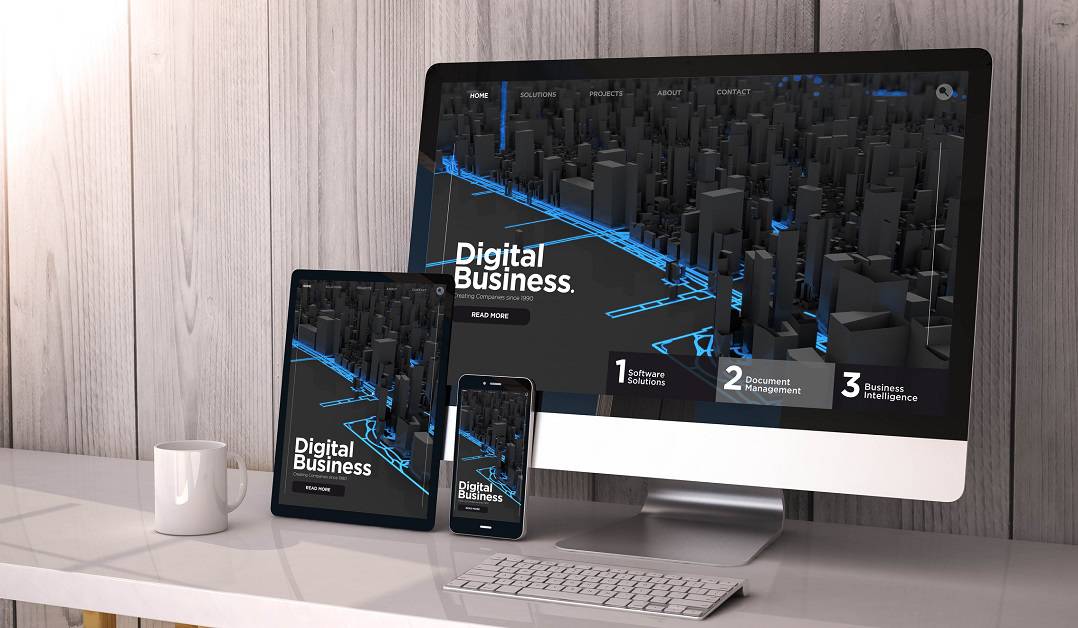Digital Product Creation: How to Create and Sell eBooks and Online Courses

Introduction
The digital age and the rise of online entrepreneurship. The internet has opened up endless possibilities for people to make money online. One of the most popular ways is through digital product creation.
In this guide, we will explore how you can create and sell digital products. More specifically, eBooks and online courses as a means of generating income.
Benefits of creating and selling digital products. Before we dive into the nitty-gritty of how to sell digital products and how to create digital products let’s discuss why it is such a lucrative venture.
First and foremost, digital products have low overhead costs. Unlike physical products, you do not need to worry about manufacturing, shipping, or storage. This means higher profit margins for you as a creator.
The potential for passive income. Another major advantage of digital product creation is the potential for passive income. Once you have created and launched your product, it can continue to generate income for you without much effort on your part.
This allows you to focus on creating more products or other aspects of your business while still earning money. Now, let’s delve into how you can create and sell two popular types of profitable digital products: ebooks and online courses.
Why Digital Product Creation is the Future
Digital products indeed represent the future of commerce for several compelling reasons. Firstly, the digital economy is expanding at an unprecedented rate.

With the increasing penetration of internet connectivity and mobile device usage, more consumers than ever are shifting their purchasing habits to digital formats.
This trend is likely to continue, given the convenience and instant access provided by digital products. Secondly, selling digital products like eBooks and online courses is incredibly scalable.
Once developed, these products can be sold to an unlimited number of customers without incurring any additional production cost, therefore offering tremendous potential for profitability. Lastly, selling digital products is environmentally friendly.
Selling digital products requires no physical materials to produce, distribute, or store, contributing to sustainability. Therefore, embracing digital product creation not only aligns with consumer trends but also offers significant economic and environmental advantages.
The shifting landscape of e-commerce and the surge in demand for online learning.
The traditional brick-and-mortar business model is no longer the only way to make money. With the increasing popularity of online shopping and e-learning, there has been a significant shift towards digital products in recent years.

Benefits of digital product creation over physical products.
The ease of access for consumers. Digital products are easily accessible to consumers, making them a convenient option for those looking to learn or purchase something.
Consumers can access these products from anywhere in the world, at any time, on various devices. This accessibility also means that creators can reach a wider audience and potentially increase their sales.
The sustainability factor.
Selling digital products is environmentally friendly as they do not require any physical resources for production or shipping. Therefore, this makes them an attractive option for consumers who are conscious of their carbon footprint and want to support sustainable businesses.
Digital product creation offers scalability.

Unlike physical products, digital products can be replicated and sold multiple times without incurring additional costs. This scalability allows creators to potentially earn more money without having to put in extra effort.
Creating and Selling eBooks
In the upcoming section, we shall delve into the intricacies of creating and selling eBooks. Also, this includes understanding the initial steps of identifying a niche and creating compelling content.

As well as more advanced steps such as eBook design, publishing, and effective marketing strategies. We will also discuss the different platforms available for selling eBooks.
As well as how to leverage them to reach a wider audience. The objective of this section is to provide a comprehensive guide to successfully turning your digital product idea into profitable eBook ventures.
Defining Your Niche for Digital Product Creation
Identifying your target audience.
The first step in creating any digital product is to define your niche and target audience. Basically, this will help you tailor your content and marketing efforts toward those who are most likely to be interested in your product.
Researching popular topics and keywords.

Use tools like Google Trends, Amazon’s Best Sellers list, and social media platforms to research what topics are currently trending or in demand within your niche. Moreover, this will give you a better idea of what kind of digital content your target audience is looking for.
Understanding market demands and gaps.
Take note of any gaps in the market. If there is a topic that is popular but not enough quality content available, this could be an opportunity for you to fill that gap with your ebook. However, be sure to conduct thorough research and ensure that there is a demand for your product before investing time and resources into creating it.
Digital Content Creation
Researching and curating content.
Once you have identified your niche and topic, it’s time to start researching and curating content for your ebook. Ensure that all information is accurate and relevant to your target audience.
In the realm of digital product creation, the quality of your content is paramount. With eBooks, it’s not just the information that matters but how it’s presented.
Invest time in researching your chosen topic to ensure you’re providing up-to-date, accurate, and valuable information to your readers. Likewise, content should be curated carefully, taking into account the expectations of the target audience.
Remember, your eBook, much like an online course, should aim to effectively solve a problem or fill a need in your niche market. So, make it engaging, informative, and easy to digest.
Organizing your content.
The organization of your eBook is essential in providing a seamless and enjoyable reading experience. Therefore, organize your content into sections or chapters to make it easier for readers to follow along.
It should follow a logical structure, starting with an introduction that outlines the purpose and scope of the eBook. Followed by main sections or chapters that delve into the topic in detail. Finally, a conclusion that summarizes the key points and leaves the reader with actionable steps or takeaways.
You can also include graphics, charts, or images to break up the text and make it more visually appealing. Careful organization not only enhances readability but also reinforces your credibility as an author, making your eBook a reliable source of information.
Structuring your eBook for maximum engagement.
Keep your readers engaged by using a variety of formatting elements. Like headings, bullet points, and call-to-action buttons.
This will make your ebook more visually appealing and easier to read. Additionally, consider including interactive elements like quizzes or worksheets to make the reading experience more interactive and engaging for your audience.
Digital Product Creation Design and Presentation
Importance of an appealing cover.
The saying “Don’t judge a book by its cover” does not apply in the digital world. So, a visually appealing and professional cover is crucial to attract potential buyers and stand out amongst competitors. Use Canva or other design tools to create an eye-catching and relevant cover for your ebook.
Formatting for different devices.
Make sure your ebook is formatted correctly for various devices. Because, in the digital age, consumers access content from a multitude of devices, including smartphones, tablets, and desktop computers.
Consequently, it is critical to ensure your eBook is effectively formatted for these various platforms. This ensures readability and satisfaction for your audience, regardless of their preferred device. So, utilize eBook formatting software or hire a professional service to optimize your eBook for different device types, reinforcing a positive reading experience for all users.
Promotion and Marketing
Leveraging social media.
Social media platforms provide an excellent avenue for promoting and marketing your eBook. Especially with their vast user base, these platforms allow you to reach a wide audience and engage with potential customers.

Craft compelling posts that highlight the benefits of your eBook. Then share snippets or previews to pique interest, and use relevant hashtags to extend your reach.
Consider paid promotions or collaborations with influencers in your niche to further boost your eBook’s visibility. Remember, consistent and strategic social media promotion can significantly enhance your eBook’s success.
Collaborating with social media influencers.
In the realm of digital product creation and promotion, leveraging the power of social media influencers can be game-changing. Especially since influencer partnerships can help your eBook or online course reach a broader audience.
Particularly if the influencer’s followers align with your target demographic. It’s not just about the number of followers, but their engagement and trust in the influencer.

By having an influencer endorse or review your eBook or online course, their followers are far more likely to trust and consider purchasing your product. Remember, when reaching out to influencers, ensure your proposal is mutually beneficial.
This could be in the form of financial compensation, an affiliate partnership, or an exchange of services. Partnering with social media influencers can help increase the visibility of your ebook and potentially lead to more sales.
Building an email list.
Building an email list is a powerful marketing tool in the realm of digital product creation. It allows you to create and nurture a direct line of communication with your potential customers.
Use your ebook as a lead magnet to build an email list of potential customers. In the context of eBooks and online courses, an engaged email list can be invaluable.
By offering valuable content, updates, or exclusive offers to your email subscribers, you build trust and credibility. This trust often translates into higher conversion rates when you launch your eBook or online course. Therefore, investing time and effort into growing and engaging your email list is a worthwhile endeavor in your digital product creation journey.
Venturing into Online Courses
In the following section, we will be exploring the world of online course creation, a lucrative avenue within the realm of digital product creation. We’ll start by identifying your area of expertise and understanding how to transform it into a comprehensive learning experience.
Just like with eBooks, we delve into the process of content creation, course design, and effective promotional strategies. We’ll also cover the various platforms available for course hosting and distribution.
Ensuring you have the tools needed to reach a broad and engaged audience. This section aims to provide a well-rounded guide to transform your knowledge into a profitable online course.
Deciding Your Course Topic
Analyzing your expertise and skills for digital product creation
The first step in creating an online course is to identify your area of expertise and skills. This will help you narrow down potential topics for your course. Consider your education, work experience, and any specialized knowledge or skills you have.
Researching market demand.
Similar to creating an ebook, you should also research the market demand for your chosen topic before investing time and resources into creating an online course. Look at what other courses are available on the topic and analyze their popularity and customer reviews.
Surveying potential students.
Consider sending out surveys or conducting market research to get feedback from potential students about what they would be interested in learning. This will also help you tailor your course content and marketing efforts towards your target audience’s needs.
Course Content Creation
Designing a curriculum for digital content creation.

Designing a curriculum is the backbone of your online course and requires careful thought and planning. Once you have decided on a topic, create a detailed curriculum for your course.
This involves structuring your content into logical and digestible chunks that progressively build on each other. Start by outlining the key learning objectives of your course, then break these down into topics and subtopics that can be covered in individual lessons.
Ensure each lesson is centered around a specific concept or skill. Also, it contains a mix of theory, practical applications, and opportunities for student interaction.
Your curriculum for digital product creation should strike a balance between being comprehensive yet not overwhelming and should cater to different learning styles. The goal is to provide a clear and engaging roadmap that guides your students from being beginners to proficient in the course topic by the end.
Filming or recording content.
After you’ve designed a comprehensive curriculum, the next step is to film or record your course content. Keep in mind that online learning thrives on a multi-modal approach.

Hence, your content should be a mix of text, audio, video, and interactive elements. When filming or recording, maintain a professional yet relatable demeanor to foster a conducive learning environment.
High-quality video and audio are crucial, as they reflect the professionalism and value of your course. Remember, your course isn’t a one-and-done deal.
You can continuously update and refine your content based on student feedback and developments in your topic area. By ensuring your course content is engaging, up-to-date, and of high quality, you’ll enhance the learning experience for your students and increase the perceived value of your course.
Offering interactive elements.
Similar to ebooks, consider incorporating interactive elements like quizzes, assessments, or assignments to make the learning experience more engaging for your students.
Platform Selection
Comparing popular online course platforms: Udemy, Teachable, etc.
When it comes to distributing your online course, choosing the right platform is pivotal. Two of the most popular platforms are Udemy and Teachable.

Udemy is a marketplace that hosts a plethora of courses across various subjects, making it ideal if you seek a broad audience. However, while it offers a wide reach, you have less control over pricing and competition is steep.
On the other hand, Teachable allows you to create your online school with its robust features. Giving you more control over branding, pricing, and student data. It’s an excellent choice if you prefer more customization and control, albeit with a smaller potential student base.
Ultimately, the choice between Udemy and Teachable comes down to your specific goals and strategies for your online course.
Self-hosting options.
Alternatively, you can also choose to self-host your online course by creating a website or using a learning management system (LMS) plugin on your existing website. This option may require more technical knowledge and resources, but it gives you complete control over your course content and pricing.
Marketing and Promotion
Pre-launch strategies.
Before launching your course, create buzz and generate interest by offering sneak peeks or discounts to a select group of people. This can help create a sense of exclusivity and urgency.
Use your email list to promote your course and offer exclusive discounts or bonuses to your subscribers. You can also create targeted email campaigns based on the interests and needs of your audience.
Using testimonials and reviews.

Encourage your students to leave reviews and testimonials about your course. Positive reviews and ratings can help attract more potential customers and build credibility for your course.
Affiliate marketing.
Consider partnering with affiliates who have a similar target audience and offer them a commission for every sale they generate. This can help expand your reach and potentially lead to more sales.
Monetization Strategies for Selling Digital Products
In this upcoming section, we will delve into the different strategies for monetizing your digital products. Specifically focusing on ebooks and online courses. We will investigate methods to optimize pricing, various sales channels to consider, and the significance of recurring revenue models.
Furthermore, we will explore the role of analytics in improving your sales strategy. This section aims to equip you with the knowledge to maximize your earnings from your digital products effectively.
Pricing to Sell Digital Products
Understanding your market’s price range.

Research the market prices for similar digital products in your niche. This will give you an idea of what customers are willing to pay and help set a competitive price for your products.
Consider offering different pricing tiers for your ebook or online course, with each tier providing additional bonuses or perks to entice potential buyers. This can also help cater to different budget levels.
Value-based pricing vs. competitive pricing.
You can either price your products based on their perceived value to the customer or set a price based on what others in the market are charging. Consider experimenting with both strategies to see which one yields better results for your specific product.
Leveraging Upsells and Cross-sells
Upselling refers to offering a higher-priced version of your product, while cross-selling involves promoting complementary products
Offering upsells or add-ons.
Consider bundling your ebook and online course together as a package deal. This can entice customers to purchase both products and also increase your overall revenue.
For example, you could offer additional one-on-one coaching sessions for an extra fee to those who purchase your online course.
Promoting complementary products.
If you have other digital products in the same niche, consider promoting them as cross-sells to your customers. This can help increase the value of each sale and potentially lead to repeat customers.
Subscription Models and Membership Sites
Benefits of recurring revenue.
Subscription models or membership sites can provide a steady stream of recurring revenue, making it easier to predict and manage your income. This can also help build a loyal customer base and establish a strong community around your products.
Offering exclusive content or perks.
To incentivize customers to subscribe, consider offering exclusive content, early access to new products, or discounts on future purchases as part of their subscription package.
Managing payment processing and subscriptions.
There are various platforms and plugins available that can help you manage payment processing and subscriptions for your digital products. Consider researching and comparing different options to find the best fit for your needs.
Overcoming Common Challenges
In this section, we will address some of the common challenges that content creators frequently encounter when engaging in digital product creation. This includes obstacles related to content creation, product pricing, marketing, and managing technical aspects.
Drawing upon successful case studies and industry best practices, we will offer actionable solutions and strategies to overcome these challenges. Furthermore, we will delve into the importance of adaptability.
Also, continuous learning in this rapidly evolving digital landscape. Whether you are creating ebooks or designing online courses. This section aims to equip you with the tools you need to excel in your digital product creation journey.
Piracy and Copyright Issues

Protecting your digital products.
There are various measures you can take to protect your digital products from being pirated or illegally shared. This includes using digital rights management (DRM) software, watermarking your products, and regularly monitoring for copyright infringement.
Dealing with piracy: Legal actions and precautions.
In the case of piracy, you can send cease and desist letters to the violators and request that they remove your content. You can also take legal action if necessary, but be sure to consult with a lawyer beforehand.
Keeping Content Updated
Regular audits and updates.
To ensure the quality and relevance of your digital products, conduct regular audits to identify any outdated or irrelevant content. Consider updating your products every few months or at least once a year.
Offering free updates to existing customers.
To maintain customer satisfaction and loyalty, consider offering free updates for your digital products to existing customers. This can also help encourage repeat purchases in the future.
Maintaining a strong customer relationship.

Lastly, maintaining a strong relationship with your customer base can also help prevent issues such as piracy and promote positive reviews and word-of-mouth referrals. Be sure to provide excellent customer support and communicate openly with your customers to address any concerns they may have.
Conclusion
The potential of digital wealth and the empowerment of online creators. As technology continues to advance and the digital landscape expands, there are endless opportunities for individuals to create and monetize their own digital products.
Whether it be through ebooks, online courses, or other forms of digital content, the key is to leverage your skills and knowledge to provide valuable solutions for others. With the right strategies and resources, anyone can turn their expertise into a profitable source
The world of digital product creation offers endless possibilities for those looking to make money online. Whether you are a seasoned entrepreneur or just starting out, there is no better time to tap into the power of digital wealth and unleash your potential as a creator. With the tips and strategies outlined in this guide, you can confidently embark on your own journey toward creating successful and profitable digital products.
Frequently Asked Questions (FAQs)
What is digital product creation?
Digital product creation refers to the process of creating digital products and selling online goods or services that can be marketed and distributed digitally. These products include, but are not limited to, eBooks, online courses, software, graphics, and music.
How do you create a digital product?
Creating a digital product involves identifying a market need, deciding on the type of product you wish to create, planning the content, and then producing it. Depending on the product, you might need specific software or tools. Once the product is ready, it can be sold on various online platforms.
What is an example of a digital product?
Examples of digital products include eBooks, online courses, downloadable music, stock photos, design templates, and various types of software.
Is it hard to create digital products?
The difficulty of creating digital products can vary depending on the type of product, your technical skills, and the market demand. However, with the right tools, resources, and a well-structured plan, anyone can create and sell digital products online.
How do digital products make money?
Digital products make money through online sales. You set up a sales platform where customers can purchase your products. The beauty of digital products is that they only need to be created once and can then be sold infinitely, without the need for inventory or physical shipping.
How do I create and sell digital products?
To create and sell digital products, start with market research to identify a need, then create a product that fills that need. Next, set up a sales platform, such as a website or an eCommerce store. Once your product is ready, promote it through various marketing channels such as social media, online ads, or email marketing.
How do I start digital content creation?
Start digital content creation by identifying what type of content you wish to create, who it is for, and the purpose it serves. Then, research your audience to understand their needs and preferences. Based on your findings, create a content strategy and start producing the content using appropriate tools and platforms.
How do I start a small digital business?
Starting a small digital business requires identifying a profitable niche, conducting market research, and developing a business plan. Then, create your digital product or service, set up your online presence, and start marketing your offerings.
How do I start digital content?
To start creating digital content, first identify your target audience, decide on the type of content you want to produce (blogs, videos, podcasts, etc.), and create a content strategy. Then, using the right tools and software, start producing, publishing, and promoting your content.
Disclosure: Some of the links in this article may be affiliate links, which can provide compensation to us at no cost to you if you decide to purchase. This site is not intended to provide financial advice. You can read our affiliate disclosure in our privacy policy.
